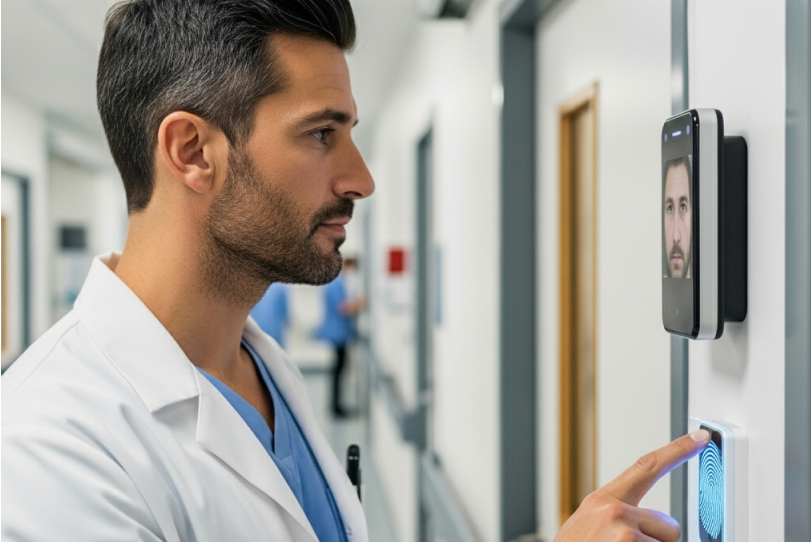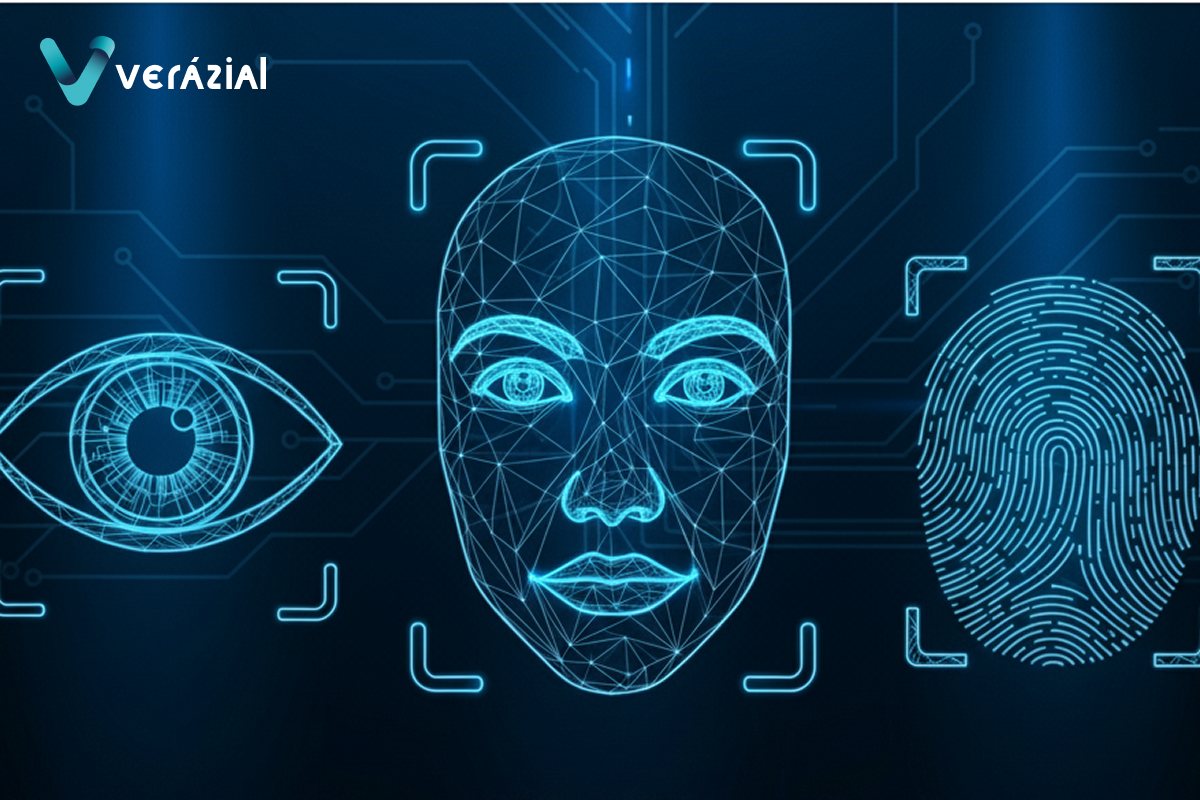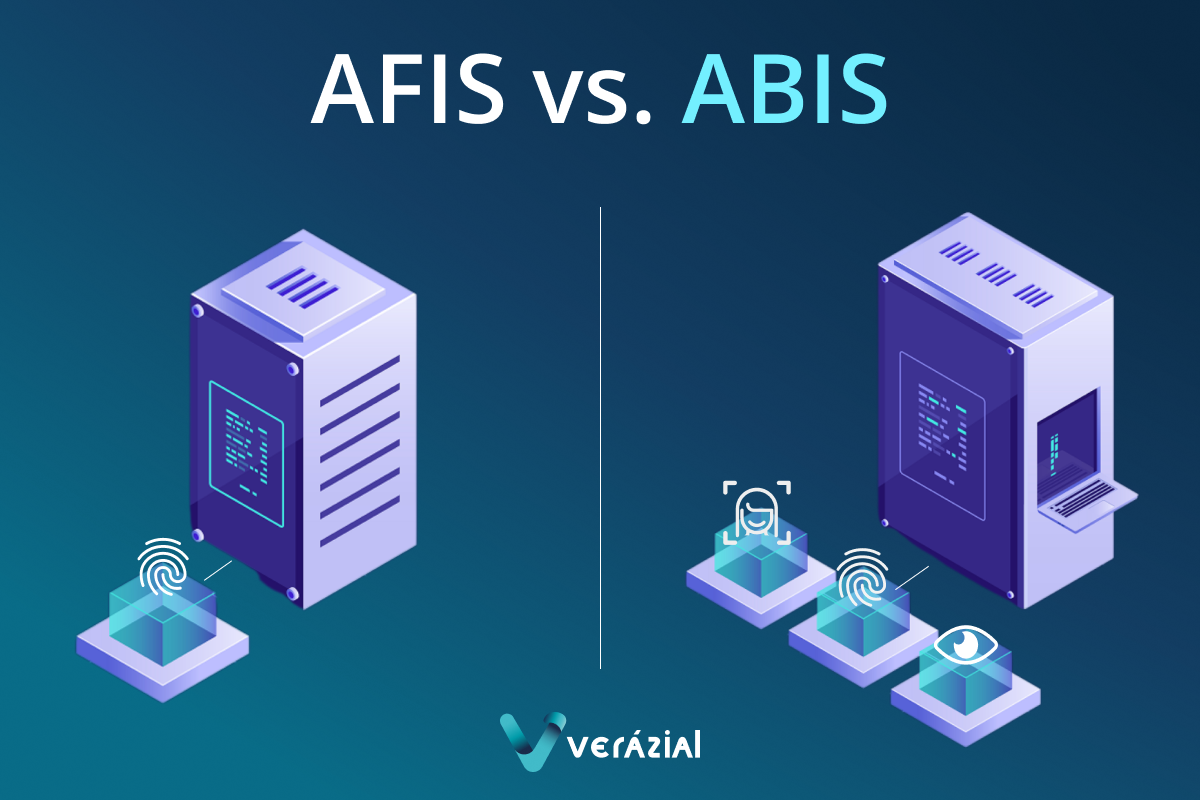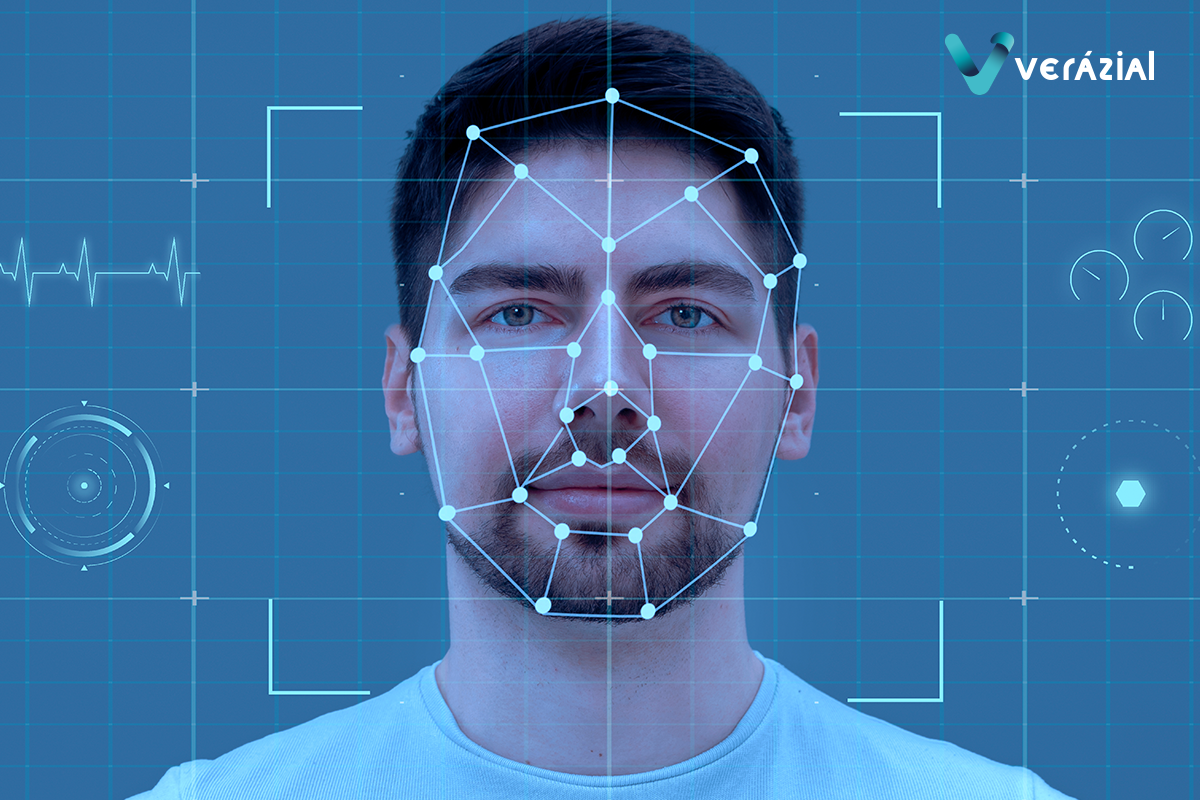Multimodal Biometrics: Why combining Iris, Fingerprint, and Facial Recognition enhances security?
Multimodal biometrics combines several identification technologies, such as iris, fingerprint, and facial recognition, to provide a more secure, accurate, and reliable way to authenticate individuals. Integrating these modalities increases resilience against errors and fraud while offering users flexibility and convenience, adapting to different contexts and security requirements.
For decades, personal identification relied on what we know (passwords, PIN codes) or what we have (cards, keys, phones). While functional, these methods share a critical weakness: they can be stolen, forgotten, or duplicated. In today’s digital era, where identity theft and fraud risks are multiplying, such fragility is no longer sustainable.
Biometric technologies emerged the answer, identifying us by who we are: our fingerprints, face, or iris, unique traits that are difficult to forge. However, relying on a single biometric modality isn’t always enough to resist sophisticated attacks or adverse conditions. This is where multimodal biometrics comes into play, combining multiple technologies to deliver maximum precision, robustness, and security.
A unimodal biometric system relies on a single characteristic (e.g., fingerprint). Although reliable, it can still be vulnerable to spoofing, capture errors, or sensor limitations.
A multimodal system, on the other hand, integrates two or more biometric technologies, such as iris, fingerprint, and facial recognition, to verify identity. These can be applied in a complementary manner (requiring multiple checks) or adaptively (selecting the most convenient modality depending on the situation).
This approach reduces errors, strengthens security, and enhances the user experience by providing alternatives when one modality is not viable.
Comparing Biometric Technologies: Fingerprint, Face, and Iris
To understand the superiority of multimodal systems, it is essential to analyze the characteristics of the most common biometric technologies:
- Fingerprint Recognition: One of the oldest and most widespread biometric methods, valued for its accessibility and low implementation cost. TUnique ridge and valley patterns enable accurate identification. Its widespread adoption has made it a standard in mobile devices and access systems. However, its main drawbacks are vulnerability to forgery (using molds) and the need for physical contact, which raises hygiene concerns in high-traffic environments. Additionally, injuries or natural wear and tear can reduce its accuracy.
- Facial Recognition: A contactless technology that identifies individuals by analyzing the distinctive facial features. It offers great convenience and is ideal for surveillance applications, allowing identification on the move and in large crowds. Despite advancements, its accuracy can be affected by external factors such as lighting, facial expressions, or the use of accessories such as glasses and masks. For very large databases, its security level is considered relatively low.
- Iris Recognition: Widely regarded as the most secure biometric technology for real-time identification. The iris’s extremely complex and unique patterns remain unchanged throughout life, making this modality highly reliable and resistant to forgery. Being contactless, it is also hygienic and convenient. Its main limitation is cost, as the sophisticated equipment required makes it more expensive than other biometric options.
Advantages of Multimodal Biometrics
- Higher accuracy and fewer errors: By cross-checking multiple modalities, false positives and negatives are minimized. If facial recognition fails due to poor lighting, fingerprint or iris verification reinforces authentication.
- Stronger protection against vulnerabilities: Each technology has weak points (fingerprints can be faked, facial recognition altered with accessories). Combined, they are far harder to deceive.
- Greater flexibility: Security adapts to the context: facial recognition for mobile environments, iris or fingerprint for critical access points, or full multimodal combinations for high-value transactions.
- Improved user experience: If one modality doesn’t work (a cut on a finger, poor lighting, gloves), another validates the identity seamlessly, avoiding frustration while maintaining strong security.

Multimodal biometrics not only improves security and accuracy in identifying individuals, but also has specific applications in various sectors where reliability is essential. By combining several technologies, systems can be adapted to different environments and needs, offering more robust solutions against errors, fraud, or unauthorized access.
- High-security environments: In airports, prisons, or defense facilities, an identification error can have critical consequences. Multimodal systems strengthen security by combining, for example, fingerprint + facial recognition at border checkpoints or iris + facial recognition for restricted-area access. This not only makes identity fraud far more difficult but also speeds up mass verification processes in high-traffic environments.
- Financial sector: High-value banking transactions or access to investment platforms require maximum fraud protection. Systems integrating face and fingerprint recognition provide a second security layer, eliminating dependence on passwords that are vulnerable to theft or phishing.
- Healthcare and pharmaceuticals: In regulated environments such as hospitals or GMP laboratories, it is essential to ensure that only authorized personnel have access to clinical data or critical rooms. Multimodal systems combine contactless modalities (face or iris) with fingerprint recognition to secure access, protect the integrity of records, and prevent errors in patient or staff identification.
Multimodal biometrics does not replace individual modalities, but rather enhances them by working together. By combining fingerprints, facial, and iris recognition, organizations achieve a higher level of security without sacrificing user convenience.
In a world where digital identity is a critical asset, multimodal biometric systems are more than just a technological upgrade, they are a strategic decision.
We invite you to read our article Fingerprints, faces or irises? We explore the features of the main biometric technologies to learn more about each technology.
Discover how Verázial ID integrates multimodal technologies into solutions tailored to different sectors, delivering maximum security with a seamless user experience.
Contact us for a demo or a customized assessment.
References
- Images © Verázial Labs. All visuals are proprietary AI-generated assets created exclusively for this publication.
Multimodal Biometrics: Why combining Iris, Fingerprint, and Facial Recognition enhances security?
Multimodal biometrics combines several identification technologies, such as iris, fingerprint, and facial recognition, to provide a more secure, accurate, and reliable way to authenticate individuals. Integrating these modalities increases resilience against errors and fraud while offering users flexibility and convenience, adapting to different contexts and security requirements.
For decades, personal identification relied on what we know (passwords, PIN codes) or what we have (cards, keys, phones). While functional, these methods share a critical weakness: they can be stolen, forgotten, or duplicated. In today’s digital era, where identity theft and fraud risks are multiplying, such fragility is no longer sustainable.
Biometric technologies emerged the answer, identifying us by who we are: our fingerprints, face, or iris, unique traits that are difficult to forge. However, relying on a single biometric modality isn’t always enough to resist sophisticated attacks or adverse conditions. This is where multimodal biometrics comes into play, combining multiple technologies to deliver maximum precision, robustness, and security.
A unimodal biometric system relies on a single characteristic (e.g., fingerprint). Although reliable, it can still be vulnerable to spoofing, capture errors, or sensor limitations.
A multimodal system, on the other hand, integrates two or more biometric technologies, such as iris, fingerprint, and facial recognition, to verify identity. These can be applied in a complementary manner (requiring multiple checks) or adaptively (selecting the most convenient modality depending on the situation).
This approach reduces errors, strengthens security, and enhances the user experience by providing alternatives when one modality is not viable.
Comparing Biometric Technologies: Fingerprint, Face, and Iris
To understand the superiority of multimodal systems, it is essential to analyze the characteristics of the most common biometric technologies:
- Fingerprint Recognition: One of the oldest and most widespread biometric methods, valued for its accessibility and low implementation cost. TUnique ridge and valley patterns enable accurate identification. Its widespread adoption has made it a standard in mobile devices and access systems. However, its main drawbacks are vulnerability to forgery (using molds) and the need for physical contact, which raises hygiene concerns in high-traffic environments. Additionally, injuries or natural wear and tear can reduce its accuracy.
- Facial Recognition: A contactless technology that identifies individuals by analyzing the distinctive facial features. It offers great convenience and is ideal for surveillance applications, allowing identification on the move and in large crowds. Despite advancements, its accuracy can be affected by external factors such as lighting, facial expressions, or the use of accessories such as glasses and masks. For very large databases, its security level is considered relatively low.
- Iris Recognition: Widely regarded as the most secure biometric technology for real-time identification. The iris’s extremely complex and unique patterns remain unchanged throughout life, making this modality highly reliable and resistant to forgery. Being contactless, it is also hygienic and convenient. Its main limitation is cost, as the sophisticated equipment required makes it more expensive than other biometric options.
Advantages of Multimodal Biometrics
- Higher accuracy and fewer errors: By cross-checking multiple modalities, false positives and negatives are minimized. If facial recognition fails due to poor lighting, fingerprint or iris verification reinforces authentication.
- Stronger protection against vulnerabilities: Each technology has weak points (fingerprints can be faked, facial recognition altered with accessories). Combined, they are far harder to deceive.
- Greater flexibility: Security adapts to the context: facial recognition for mobile environments, iris or fingerprint for critical access points, or full multimodal combinations for high-value transactions.
- Improved user experience: If one modality doesn’t work (a cut on a finger, poor lighting, gloves), another validates the identity seamlessly, avoiding frustration while maintaining strong security.

Multimodal biometrics not only improves security and accuracy in identifying individuals, but also has specific applications in various sectors where reliability is essential. By combining several technologies, systems can be adapted to different environments and needs, offering more robust solutions against errors, fraud, or unauthorized access.
- High-security environments: In airports, prisons, or defense facilities, an identification error can have critical consequences. Multimodal systems strengthen security by combining, for example, fingerprint + facial recognition at border checkpoints or iris + facial recognition for restricted-area access. This not only makes identity fraud far more difficult but also speeds up mass verification processes in high-traffic environments.
- Financial sector: High-value banking transactions or access to investment platforms require maximum fraud protection. Systems integrating face and fingerprint recognition provide a second security layer, eliminating dependence on passwords that are vulnerable to theft or phishing.
- Healthcare and pharmaceuticals: In regulated environments such as hospitals or GMP laboratories, it is essential to ensure that only authorized personnel have access to clinical data or critical rooms. Multimodal systems combine contactless modalities (face or iris) with fingerprint recognition to secure access, protect the integrity of records, and prevent errors in patient or staff identification.
Multimodal biometrics does not replace individual modalities, but rather enhances them by working together. By combining fingerprints, facial, and iris recognition, organizations achieve a higher level of security without sacrificing user convenience.
In a world where digital identity is a critical asset, multimodal biometric systems are more than just a technological upgrade, they are a strategic decision.
We invite you to read our article Fingerprints, faces or irises? We explore the features of the main biometric technologies to learn more about each technology.
Discover how Verázial ID integrates multimodal technologies into solutions tailored to different sectors, delivering maximum security with a seamless user experience.
Contact us for a demo or a customized assessment.
References
- Images © Verázial Labs. All visuals are proprietary AI-generated assets created exclusively for this publication.
Multimodal Biometrics: Why combining Iris, Fingerprint, and Facial Recognition enhances security?
Multimodal biometrics combines several identification technologies, such as iris, fingerprint, and facial recognition, to provide a more secure, accurate, and reliable way to authenticate individuals. Integrating these modalities increases resilience against errors and fraud while offering users flexibility and convenience, adapting to different contexts and security requirements.
For decades, personal identification relied on what we know (passwords, PIN codes) or what we have (cards, keys, phones). While functional, these methods share a critical weakness: they can be stolen, forgotten, or duplicated. In today’s digital era, where identity theft and fraud risks are multiplying, such fragility is no longer sustainable.
Biometric technologies emerged the answer, identifying us by who we are: our fingerprints, face, or iris, unique traits that are difficult to forge. However, relying on a single biometric modality isn’t always enough to resist sophisticated attacks or adverse conditions. This is where multimodal biometrics comes into play, combining multiple technologies to deliver maximum precision, robustness, and security.
A unimodal biometric system relies on a single characteristic (e.g., fingerprint). Although reliable, it can still be vulnerable to spoofing, capture errors, or sensor limitations.
A multimodal system, on the other hand, integrates two or more biometric technologies, such as iris, fingerprint, and facial recognition, to verify identity. These can be applied in a complementary manner (requiring multiple checks) or adaptively (selecting the most convenient modality depending on the situation).
This approach reduces errors, strengthens security, and enhances the user experience by providing alternatives when one modality is not viable.
Comparing Biometric Technologies: Fingerprint, Face, and Iris
To understand the superiority of multimodal systems, it is essential to analyze the characteristics of the most common biometric technologies:
- Fingerprint Recognition: One of the oldest and most widespread biometric methods, valued for its accessibility and low implementation cost. TUnique ridge and valley patterns enable accurate identification. Its widespread adoption has made it a standard in mobile devices and access systems. However, its main drawbacks are vulnerability to forgery (using molds) and the need for physical contact, which raises hygiene concerns in high-traffic environments. Additionally, injuries or natural wear and tear can reduce its accuracy.
- Facial Recognition: A contactless technology that identifies individuals by analyzing the distinctive facial features. It offers great convenience and is ideal for surveillance applications, allowing identification on the move and in large crowds. Despite advancements, its accuracy can be affected by external factors such as lighting, facial expressions, or the use of accessories such as glasses and masks. For very large databases, its security level is considered relatively low.
- Iris Recognition: Widely regarded as the most secure biometric technology for real-time identification. The iris’s extremely complex and unique patterns remain unchanged throughout life, making this modality highly reliable and resistant to forgery. Being contactless, it is also hygienic and convenient. Its main limitation is cost, as the sophisticated equipment required makes it more expensive than other biometric options.
Advantages of Multimodal Biometrics
- Higher accuracy and fewer errors: By cross-checking multiple modalities, false positives and negatives are minimized. If facial recognition fails due to poor lighting, fingerprint or iris verification reinforces authentication.
- Stronger protection against vulnerabilities: Each technology has weak points (fingerprints can be faked, facial recognition altered with accessories). Combined, they are far harder to deceive.
- Greater flexibility: Security adapts to the context: facial recognition for mobile environments, iris or fingerprint for critical access points, or full multimodal combinations for high-value transactions.
- Improved user experience: If one modality doesn’t work (a cut on a finger, poor lighting, gloves), another validates the identity seamlessly, avoiding frustration while maintaining strong security.

Multimodal biometrics not only improves security and accuracy in identifying individuals, but also has specific applications in various sectors where reliability is essential. By combining several technologies, systems can be adapted to different environments and needs, offering more robust solutions against errors, fraud, or unauthorized access.
- High-security environments: In airports, prisons, or defense facilities, an identification error can have critical consequences. Multimodal systems strengthen security by combining, for example, fingerprint + facial recognition at border checkpoints or iris + facial recognition for restricted-area access. This not only makes identity fraud far more difficult but also speeds up mass verification processes in high-traffic environments.
- Financial sector: High-value banking transactions or access to investment platforms require maximum fraud protection. Systems integrating face and fingerprint recognition provide a second security layer, eliminating dependence on passwords that are vulnerable to theft or phishing.
- Healthcare and pharmaceuticals: In regulated environments such as hospitals or GMP laboratories, it is essential to ensure that only authorized personnel have access to clinical data or critical rooms. Multimodal systems combine contactless modalities (face or iris) with fingerprint recognition to secure access, protect the integrity of records, and prevent errors in patient or staff identification.
Multimodal biometrics does not replace individual modalities, but rather enhances them by working together. By combining fingerprints, facial, and iris recognition, organizations achieve a higher level of security without sacrificing user convenience.
In a world where digital identity is a critical asset, multimodal biometric systems are more than just a technological upgrade, they are a strategic decision.
We invite you to read our article Fingerprints, faces or irises? We explore the features of the main biometric technologies to learn more about each technology.
Discover how Verázial ID integrates multimodal technologies into solutions tailored to different sectors, delivering maximum security with a seamless user experience.
Contact us for a demo or a customized assessment.
References
- Images © Verázial Labs. All visuals are proprietary AI-generated assets created exclusively for this publication.
You May Also Like
You May Also Like





